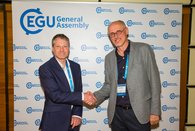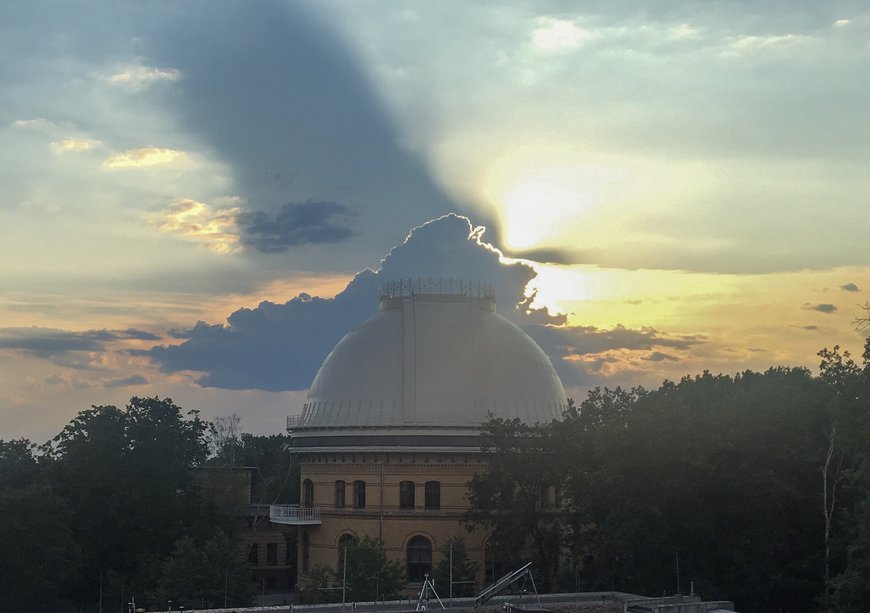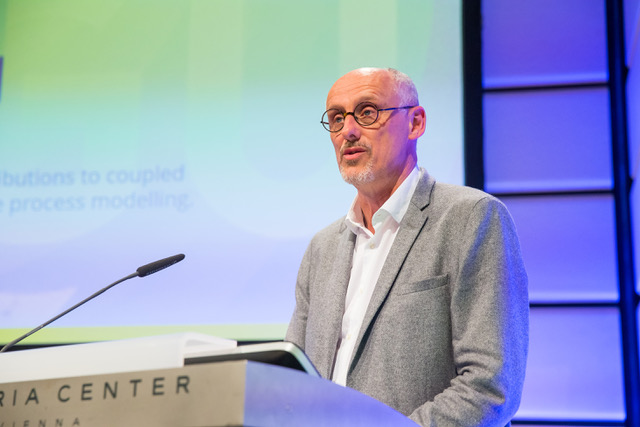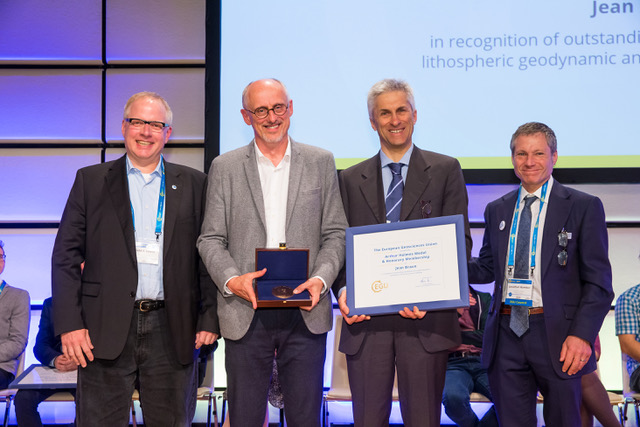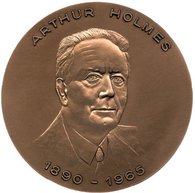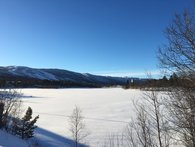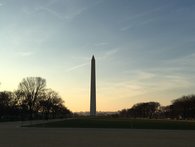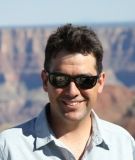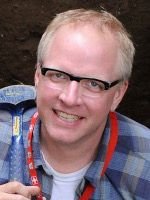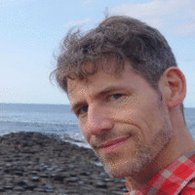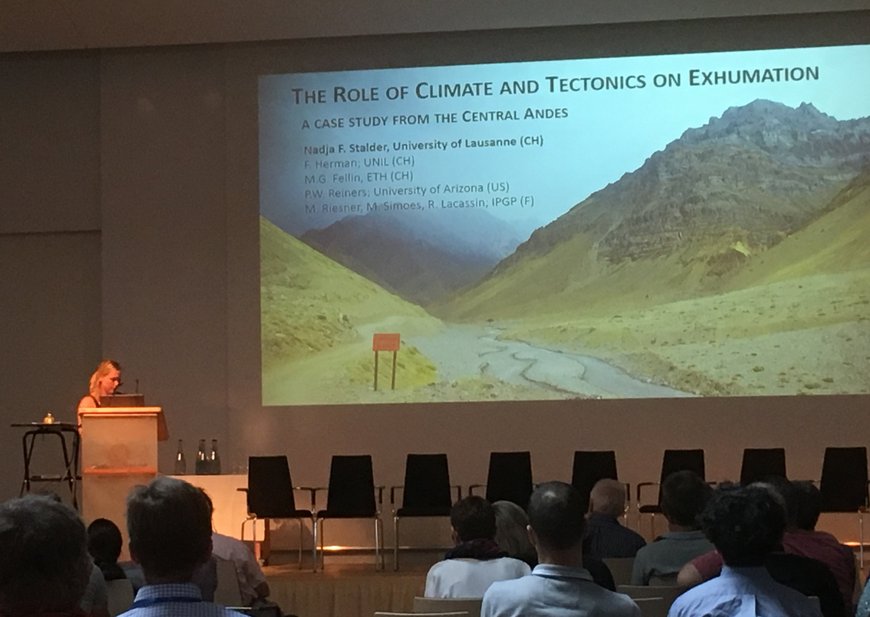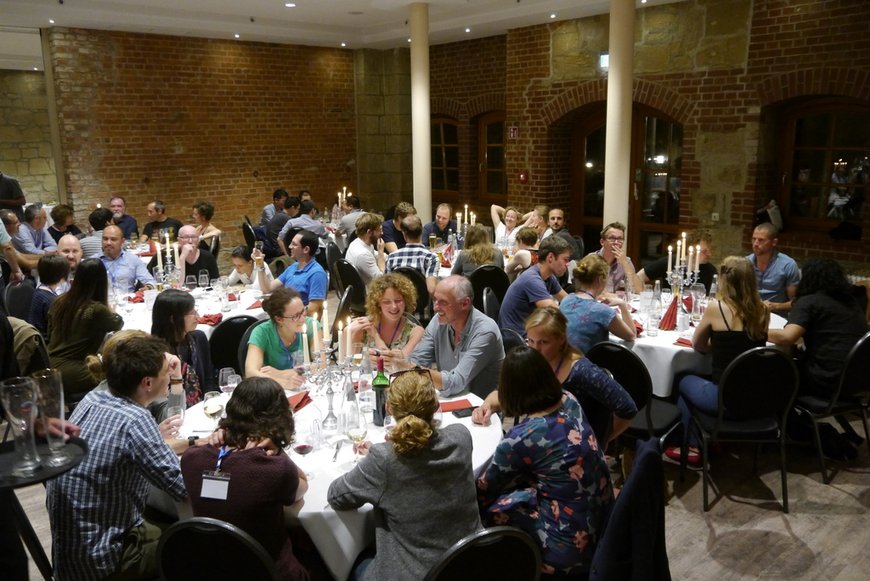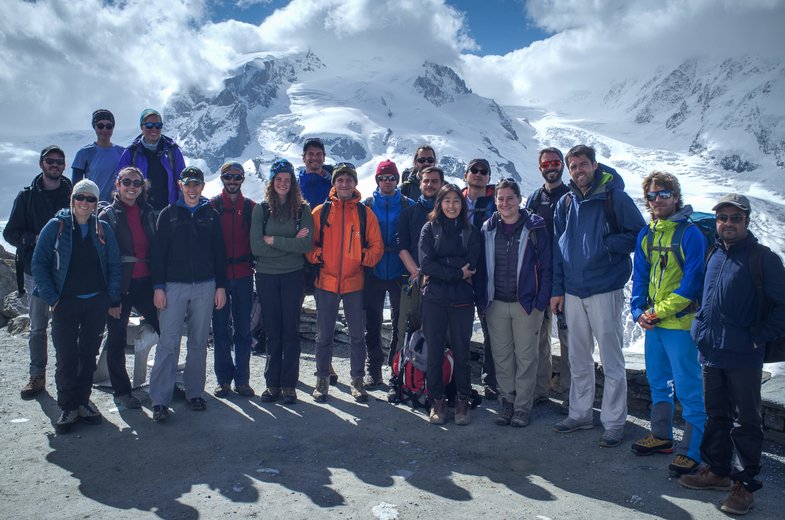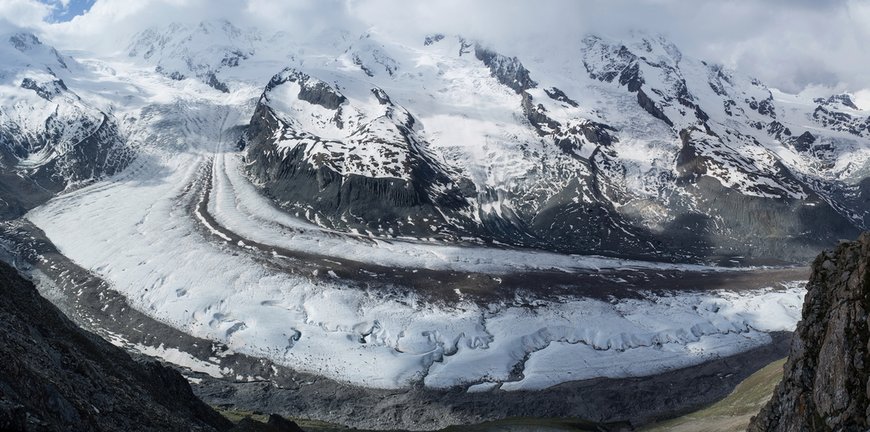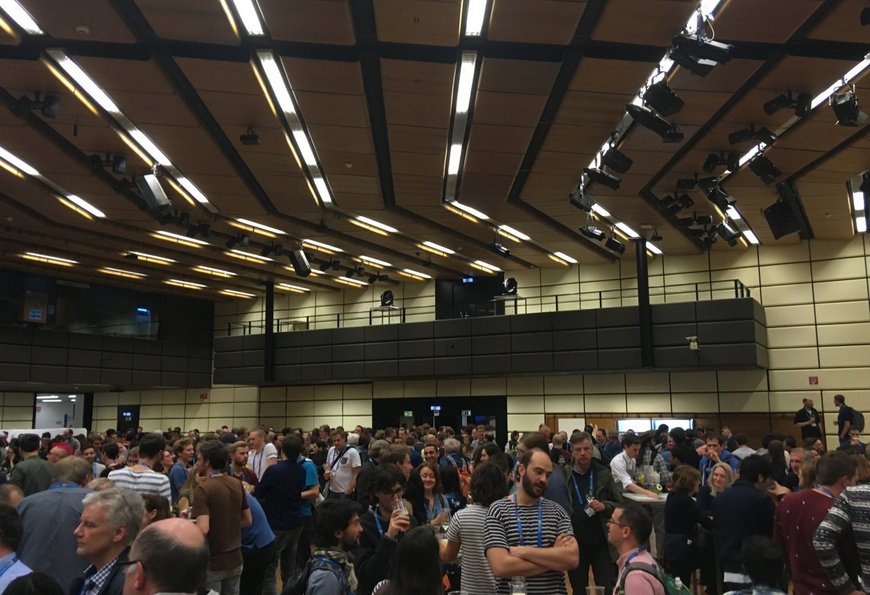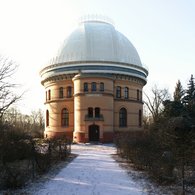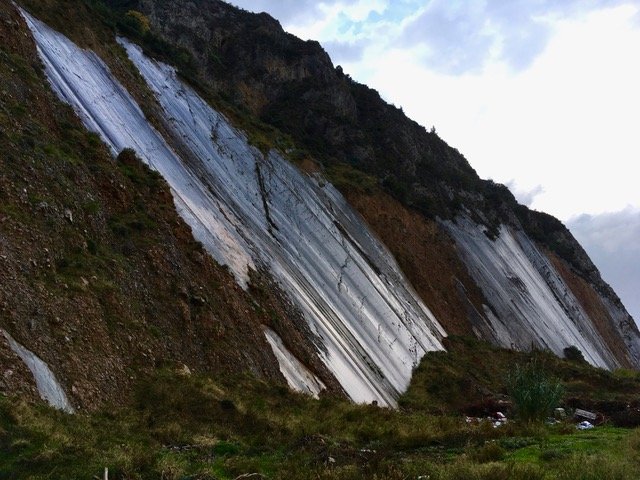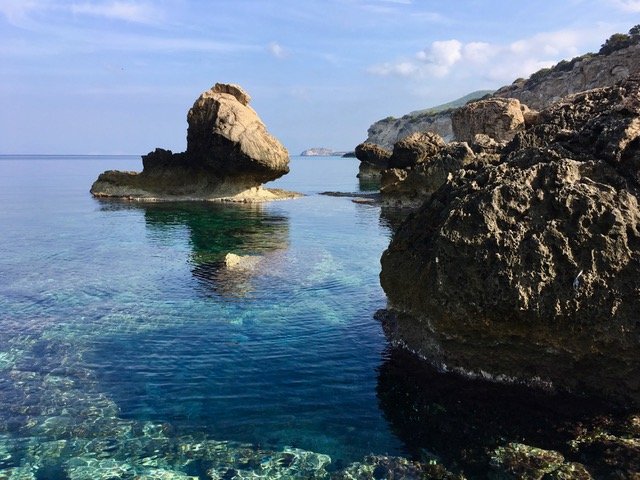New section members!
We are thrilled to announce that two research scientists, Dr. Erik Chan and Dr. Charlie Shobe, have joined us in September 2019. Dr. Chan has backgrounds in Astrophysics, Geophysics, and Planetary Sciences. His work covered distinct topics, including the rotational stability of terrestrial planets, the interior structure of the Moon, the possible evidence for an ancient ocean on Mars, and ice-age palæoclimate and sea level. The intersection of these topics lies in the complex, but elegant interplay between global geophysics, planetary interior properties and dynamics, and planetary surface processes. With collaborators in many different fields of research, Dr. Chan uses old-fashioned theoretical development, numerical methods, and statistical analyses of data to thread together various disciplines in the continual quest to make sense of it all.
Dr. Charlie Shobe is joining the section to work on modelling the development of deep marine stratigraphy. He will be working towards inverting deep marine stratigraphy to understand the long-term denudation history of passive margin landscapes. Charlie received his PhD in August 2019 from the University of Colorado, where he worked on a variety of problems in river and hillslope geomorphology as well as landscape evolution model development.
Jean Braun receives Arthur Holmes Medal at EGU General Assembly 2019
Jean Braun, Kim Huppert, Katherine Kravitz, Igor Lisac, and Xiaoping Yuan attended the European Geosciences Union (EGU) General Assembly and Steepest Descent Meeting in Vienna, Austria April 8 - 13. At the EGU General Assembly, Jean received the Arthur Holmes Medal and Honorary Membership and gave an inspiring plenary lecture to a packed room on "Modelling landscape evolution: from simulation to inspiration". Jean's talk and the presentation of medals can be viewed on the EGU Webstreaming page.
Welcoming Dr. Hui Tang
We are delighted to welcome Dr. Hui Tang, who joined us from the University of Arizona on 1st July.
Dr. Hui Tang's research group studies natural hazards and related processes across a wide range of environments, from mountain regions to coastal areas even deep ocean over different time scales. The work has wide topics ranging from earthquake and tsunami, storm and hurricane, landslide and debris-flow, to flood and paleo-flood. We use a variety of tools and methods, including field survey, remote sensing, processes-based modelling, and machine learning to understand physical processes behind all these natural hazards.
INQUA 2019
Dr. Hui Tang has attended INQUA 2019 Congress held at Dublin, Ireland from 25th July to 31st July to present his recent work about improving tsunami hazard assessment by using geological records and inversion modelling.
COLORS Project Basin and Range field trip
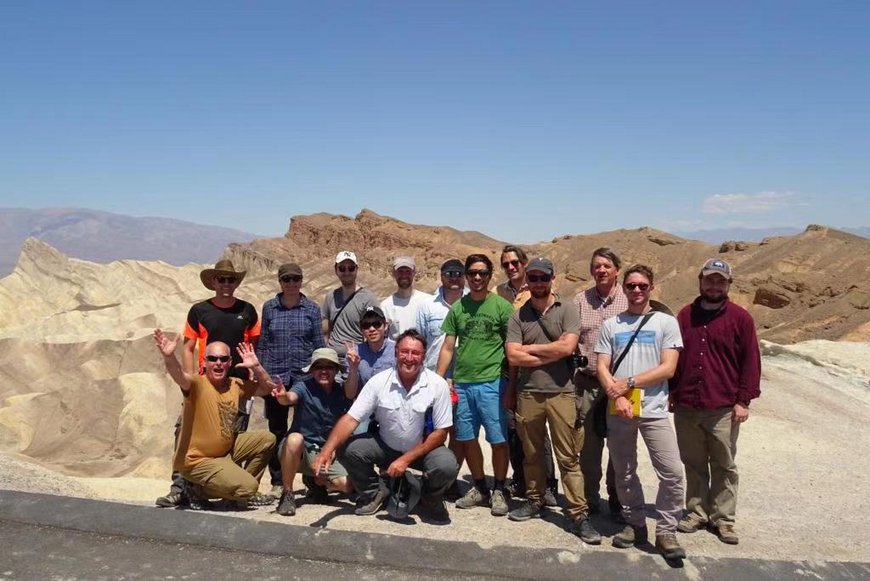
Xiaoping and most people from the COLORS project joined a 6-day Basin and Range field trip starting on 11th of June. Prof. Brain Wernicke and two assistants from Caltech lead this fantastic trip. It really opened our ideas on the formation of Grand Canyon in the Colorado Plateau, compressive and later extensional tectonics in the Basin and Range Province, the formation of core complex, mountain and fans in the Death Valley. We are building up our understanding of the detailed field studies conducted in 1980s to form the great Wernicke's model. By the way, for the first time, I encountered the hottest temperature (maximum up to 50°) there.
Feedback und report from our intern
The section's intern, Lena Jebasinski, has written the following summary for us following her internship, which she completed on 31 July 2019. We are happy to hear that she has enjoyed her time with us.
"After completing my bachelor‘s degree in Earth Sciences, I did an internship in the Section Earth Surface Process Modelling at the GFZ in Potsdam from May to July 2019. The aim of the internship was to familiarize myself with the possibilities of modelling geomorphological processes and thus to make conclusions about our planet and the processes running on it. I learned to edit, modify and apply landscape evolution models, implemented with the programming language Python.
At The Long Night of the Sciences I was able to apply the learning achievements directly and I created short animations for a presentation. I presented the talk successfully during The Long Night of the Sciences in the seminar room of the Great Refractor. Further tasks in the programming language Python gave me the opportunity to deepen my knowledge. In addition, I was able to participate in a new project. Through group meetings, seminars and paper reading groups, I also got a deep insight into projects of other employees of the GFZ, especially from our section. In this way, I got to know the research of the GFZ in various fields of geosciences.
The staff were all very friendly and helpful. I felt very welcome. The members in the section work very closely with each other and help each other out in many things. The large open office and the open, very helpful manner of working create a unique atmosphere that I will miss very much. I thank Jean Braun and the whole section for the friendly reception and the helpfulness."
EGU General Assembly and Steepest Descent Meeting 2019 in Vienna
Jean Braun, Kim Huppert, Katherine Kravitz, Igor Lisac, and Xiaoping Yuan attended the European Geosciences Union (EGU) General Assembly and Steepest Descent Meeting in Vienna, Austria April 8 - 13. At the EGU General Assembly, Jean received the Arthur Holmes Medal and Honorary Membership and gave an inspiring plenary lecture to a packed room on "Modelling landscape evolution: from simulation to inspiration".
Later in the week, Kim presented a highlight talk "Wave power and seacliff retreat rates in the Hawaiian Islands", Kat presented a highlight poster "The role of geomorphology and climate on macroevolutionary processes in Madagascar and Sri Lanka", Igor presented a poster "Application of a model for point-wise prediction of stream flow statistics using climatic and geomorphologic data to Taiwan", and Xiaoping presented a talk "Inverse analysis of Pearl River source-to-sink system, South China Sea: Implications for SE Tibetan uplift and monsoon intensification".
The group also enjoyed catching up with colleagues - including the third annual reunion dinner with the University of Lausanne Interactions between Climate and Earth surface processes (ICE) group - and learning about advances in geomorphology and other geosciences at the EGU General Assembly and at the Steepest Descent Meeting.
Visit from Luke McGuire and Hui Tang, University of Arizona

Assistant professor Luke McGuire and postdoctoral research scientist Hui Tang (University of Arizona) visited our section April 15 - 18. During their visit, Dr. McGuire presented a talk “The geomorphic impact of wildfire: from debris flow hazards to landscape evolution” in our section seminar.
Dr. McGuire and Dr. Tang also met with researchers in our section and other sections at the GFZ and had a chance to tour the Großer Refraktor telescope during their stay. We are excited to have Dr. Tang join our research group as a senior research scientist this summer, and we look forward to future collaborations and scientific exchange with Dr. McGuire's research group.
Fortran Interface FastScapeLib release
Today (Monday 4th February 2019), we released the latest version of the Fortran Interface FastScapeLib on GitHub thanks to Xiaoping Yuan, Jean Braun and Benoît Bovy who worked very hard to make it easy to use and install. The software solving the basic landscape evolution equations (stream power law, including the effect of sedimentation, and hill slope processes) is designed to be linked to any tectonic model (from a simple flexural model to any complex 3D thermo-mechanical model). It is written in Fortran but can be called from Fortran, C, C++, Python and (soon) Matlab. It is designed to run on any platform (MacOS, Linux and Windows) thanks to Benoît’s efforts and is available at: https://github.com/fastscape-lem/fastscapelib-fortran
EGU announces Jean Braun will receive the Arthur Holmes Medal and Honorary Membership
On October 17, the European Geosciences Union (EGU) announced that Jean Braun has been selected to receive the Arthur Holmes Medal and Honorary Membership for "exceptional international merit and scientific achievements in solid Earth geosciences" at the EGU General Assembly in Vienna, Austria April 8-12, 2019. The Arthur Holmes medal is one of the most prestigious awards bestowed by EGU. Jean will present a plenary lecture at the award ceremony when he receives his medal in Vienna.
Congratulations Jean!
Addendum: Jean's talk and the award ceremony are available to view on the EGU Web Streaming page.
SINTEF Winter School 2019: Learning from Data in Geilo, Norway
Kim Huppert attended the 2019 Geilo Winter School on eScience: Learning from Data in Geilo, Norway January 20 - 25, funded by the Research Council of Norway. The winter school covered a range of topics including data assimilation, inverse modeling, parameter estimation, uncertainty quantification, value of information, and machine learning in fifteen 90-minute lectures (conveniently scheduled in the mornings and evenings to allow for a long mid-day ski break!).
Debugging FastScape Interface
From January 15 to 17 a small working group of the COLORS consortium (from Bergen, Rennes and Toulouse) met to help Xiaoping Yuan and Jean Braun debug the latest release of the FastScape Interface that we are currently polishing for release. The Interface is designed to be coupled to a thermo-mechanical model but can also be used in any stand-alone Fortran, C, Python or Matlab code.
AGU Fall Meeting 2018 in Washington, D.C.
Benoît Bovy, Ruohong Jiao, Kim Huppert, and Xiaoping Yuan attended the American Geophysical Union (AGU) Fall Meeting in Washington, D.C., USA December 10 - 14. Benoît presented a short talk and poster "Xarray-simlab: a Python package to build, customize and run computational models interactively", Jiao presented a poster "Constraining 90 Ma landscape evolution model of Madagascar using erosional and sedimentary data", Kim presented an invited talk "The imprint of discharge variability on bedrock river incision on the Hawaiian island of Kaua'i", and Xiaoping presented a talk "A new efficient, O(n) and implicit method to solve the stream power law taking into account sediment transport and deposition". In addition to presenting their research, Benoît, Jiao, Kim, and Xiaoping enjoyed hearing about the latest scientific results across the geosciences and catching up with the broader community (including members of Section 4.6 in a shared conference apartment!)
Visit from Michael Lamb, Caltech
Professor Michael Lamb visited the GFZ December 3 - 6. During his visit, Professor Lamb presented a lecture (co-hosted by sections 4.6 and 4.7) "Bedrock Canyons Carved by the Largest Known Floods on Earth and Mars" and met with scientists in our section and other sections across the GFZ.
Earth Surface Dynamics Lecture by Todd Ehlers, Universität Tübingen
Section 4.7 invited Professor Todd Ehlers to the GFZ December 3-4 to give the Earth Surface Dynamics (ESD) Lecture. The new ESD lecture series (co-organized by sections 3.3, 3.5, 3.7, 4.3, 4.4, 4.6, and 4.7) aims to bring together the broad range of researchers on Telegrafenberg looking at Earth surface processes. The goal for these talks is to be broad and accessible and deal with big, global topics, so that non-experts and specialists alike find them enlightening. Professor Ehlers's talk "Latitudinal Variations in the Influence of Vegetation on Catchment Denudation" was well attended by scientists working in research groups across the GFZ, the Potsdam Institute for Climate Impact Research (PIK), and the Alfred Wegner Institute (AWI). During his visit, Professor Ehlers also gave a specialized talk on “Formation of Topography by Seismic Slow Slip Events: The Olympic Mountains (USA)” in a workshop on links between tectonics and topography organized by our section. The workshop also featured talks by Professor Onno Oncken (“Seismic cycle and topography uplift at convergent plate boundaries - does it scale?”) and Dr. Pia Victor ("Exploring the seismotectonic significance of shallow triggered slip captured with the IPOC Creepmeter Array“) of Section 4.1. We enjoyed meeting with Todd during his visit.
Intern visit to our section
Gustav, the intern coming from local Humboldt-Gymnasium Potsdam joined GFZ from 26th November to 4th December, 2018. During that period, he spent some time in our section where we, in addition to giving him a brief intro of GFZ, our section and fascinating office building, introduced him to our main activities in a general sense. Also, we talked with him about our separate and group projects, about the importance of numerical modelling and showed him some basic data analysis tools and results.
COLORS Meeting in Pau
From Monday 26th November to Wednesday 28th November 2018, Xiaoping Yuan and Jean Braun attended a COLORS meeting at the R&D Total laboratory in Pau, France. We presented our latest results to our Total colleagues showcasing our recent advances in developing our FastScape landscape evolution models and its use to invert (in a Bayesian sense) geological data and, in particular, stratigraphic data. We were joined in our presentation by other members of the COLORS consortium from Toulouse, Rennes, Grenoble and Bergen.
Landscape Genomics
From November 26-30, 2018, Katherine Kravitz attended a course in Berlin on landscape genomics, a field that studies how the environment can modify the distribution of genetic diversity across a landscape. The workshop provided an overview of how to analyze environmental and genetic data in conjunction to study population structure and local adaptation. The attendees of the workshop spanned across many disciplines and had a wide variety of interest in different processes and external factors that impact environment and adaptation. It was a great way to learn some of the leading approaches and tools necessary to understand the link between landscape and biodiversity.
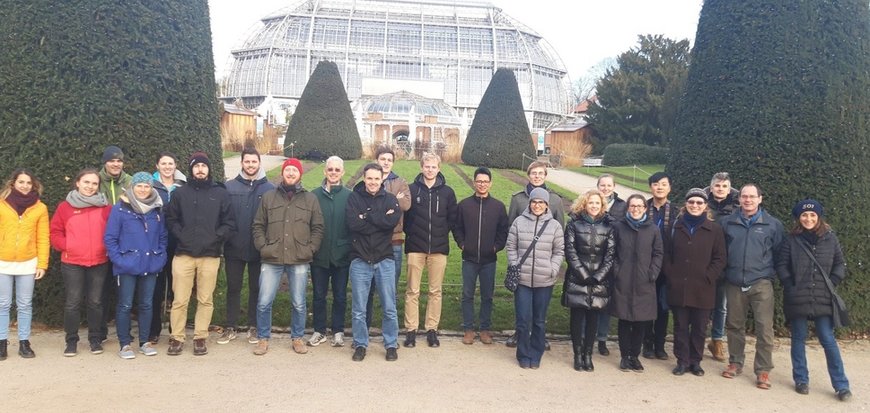
Visit from Sébastien Lénard, CRPG/CNRS/Université de Lorraine
Sébastien Lénard, a PhD student at CRPG, CNRS, and Université de Lorraine, visited Section 4.7 November 14 - 21. During his visit, Sébastien presented a seminar "Stability of erosion in the Himalayan orogen over the Quaternary transition, as shown by in-situ 10Be and Sr-Nd isotopes from the sedimentary record" and discussed his research with scientists in various sections at the GFZ.
Visit from Nikos Theodoratos, ETH Zurich
Nikos Theodoratos, a PhD student at ETH Zurich, visited the Earth Surface Process Modelling group (formerly Section 5.5, now renamed 4.7) at GFZ on October 17-19, 2018 in preparation for his submitting a proposal to the Swiss National Foundation to obtain funding for a post-doctoral position in our section. During his PhD studies at ETH in Zurich, Nikos has written a very insightful paper (published in ESURFD) on the scaling of the Stream Power Law.
Following his visit, Nikos sent us the following message:
“Dear Section 5.5, Thank you for your hospitality and for the opportunity to present my work at your seminar! I especially appreciated the effort you put into connecting me with researchers from other GFZ groups and the University of Potsdam, which led to many discussions with very interesting people. Your office, located in an old observatory and surrounded by nature, is a very stimulating and fun place to work at; I really enjoyed my time there.
Warm regards, Nikos”
GeoMod2018 conference in Barcelona
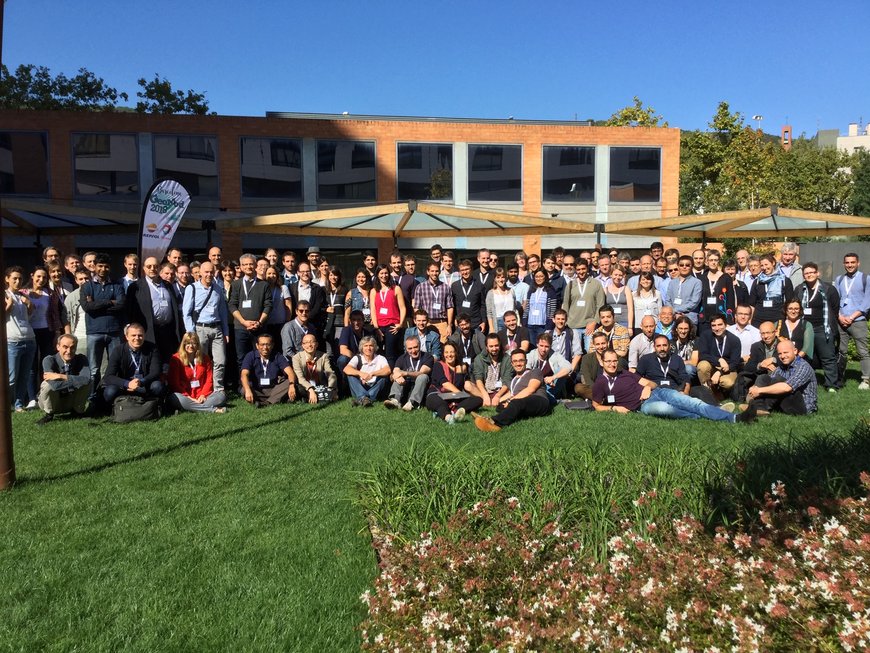
From October 1-4, several members of our section (Jean, Igor, and Xiaoping) attended the GeoMod2018 conference in Barcelona, dedicated to the latest results of analogue and numerical modelling in Geosciences. The presenters' areas of expertise varied widely (e.g., tectonics, volcanic processes, surface processes, lithosphere dynamics, rock physics, and geofluids), and all were generally happy with their own work and the interesting feedback received.
Our section members presented their latest ideas, methods and results of numerical modeling of surface processes. For example, Jean presented "Efficient algorithms for the simulation of Earth surface processes", Igor showed his latest result of "Application of a model for point-wise prediction of stream flow statistics using climatic and geomorphologic data on Walnut Gulch (Arizona)", and Xiaoping presented the new method of sediment transport and deposition on land. They enjoyed very much the feedback to their presentations.
Thermo 2018 Conference in Quedlinburg
From 16-21 September, Jean, Audrey, Jessica, and Jiao attended the Thermo 2018 conference in Quedlinburg, Germany. This international conference is held every two years, focusing on the development in methodology and application of low-temperature thermochronology. There were many interesting and inspiring talks, posters, and discussions. The attendees from our section took the opportunity to present their current work.
Jean talked about the "time scale for orogenic growth and decay”. Audrey gave a talk on the “roles of erosion and isostasy in topography building” in the case of Cordillera Blanca, and presented new data and interpretation about the uplift and denudation histories of the Namibian passive margin. Jess gave an invited talk on the roles of erosion and mantle dynamics in the landscape evolution of southern Africa. After the main program of the conference, Jean gave a half-day course, introducing the new version of Pecube, a thermo-kinematic model to solve heat transport in the crust and invert thermochronological data.
Trip to Lausanne, June 2018
Our section spent the month of June in Lausanne, hosted by Prof Herman (Frédéric) at the Université de Lausanne (UNIL), a specialist in the study of glacier dynamics and glacial erosion. This was the second part of an exchange program partly funded by the Fondation Herbette. During the entire month, our section was fully integrated within the Lausanne group in the Geopolis building on the Unil campus.
We organized bi-daily short seminars (part of the now famous “Monique Seminar Series”) where each researcher presented an aspect of his/her current research and/or a novel technique he/she has developed. This served as a catalyst for further informal interactions, which, in some instances, led to formal collaborations through the setting up of common projects. Expertise was also shared on the use and development of numerical methods. The Lausanne group has much experience in the development of numerical models of glacier dynamics and glacial erosion. Several of Frédéric’s PhD students organized a two-day field trip to Zermatt and the Gorner Glacier. On the way from Lausanne, we travelled through the Rhone Valley where we discovered various geomorphological features. At several sites we dwelled in intense discussions about many topics such as the propagation of knickpoints, the relative efficiency of glacial vs fluvial erosion, or the circulation within Lake Geneva. On the second day, we visited the Gorner Glacier where Frédéric’s team explained the various field experiments they currently conduct there.
During our stay in Lausanne, several visitors joined us for a few days: Guillaume Cordonnier from Grenoble, Konstanze Stübner from Uni Potsdam, Eric Deal from MIT, Guillaume Baby from Rennes, Erika Erlanger from ETH, Olivier Beyssac from Paris and Simon Cox from Otago (NZ).
The visit led to the following collaborative projects/activities:
- Development of an implicit method to solve the glacial erosion equations
- Development of a TL/OSL model for incorporation into thermochronological (Pecube) software
- Further development of a method to estimate ice thickness from ice surface geometry
- Joint research project aimed at estimating an equivalent of Hack’s Law for glacier flow
- Inversion of thermochronological data from the Andes ⁃ Validation of methods to interpret thermochronological data
- Many interactions with other faculty/research staff at Unil outside of Frédéric’s group (ecologists, hydrologists, other geomorphologists, etc.)
The University of Lausanne is also ideally located along the shore of Lake Geneva. Members of the section really enjoyed it with regular swims, barbecues and runs along the lake shore, as well as many climbing excursions during the weekends. Weather was beautiful and allowed us to fully enjoy the beautiful surroundings.
EGU annual meeting 2018
During April 8-13, most of our section members attended the annual meeting of the European Geosciences Union in Vienna.
The diversity of sessions provided something for every taste: members of the section were seen attending talks and posters on geomorphology, hydrology, geoinformatics, glaciology, paleontology, space science ... After all, one of the advantages of a large international conference is the broad expertise on display. Members of 5.5 displayed their own expertise in the form of poster presentations at the meeting. Most opted for a traditional format, while Benoit Bovy and Kim Huppert had to deal with the particular opportunities as well as challenges of an interactive poster presentation called PICO®. The presenters' experiences varied widely, but all were generally happy with their own work and the interesting feedback received.
Towards the end of the meeting, everyone enjoyed catching up with Frederic Herman's group from University of Lausanne: there were plans to be made for the group visit coming up in June. Check back in a couple of months to see if any came to fruition!
Erik Tamre (on behalf of Section 5.5)
We have moved again!
In January 2018 Section 5.5 moved to building A27, the "Große Refraktor".
It's a truly fascinating building, and we are very much enjoying this new environment!
Group Retreat, Belgium, October 2017
For our first group retreat, we spent a great weekend at the end of October in the Belgian Ardennes! We enjoyed walking across lovely landscapes such as the (wet) Haute-Fagnes plateau and the valleys of Semois and Ninglinspo, where we saw some interesting geomorphological features. We also visited the city of Liège as well as the Bastogne War Museum that immersed us into the Battle of the Bulge. Of course, we also enjoyed local food specialities and fine Belgian beers!
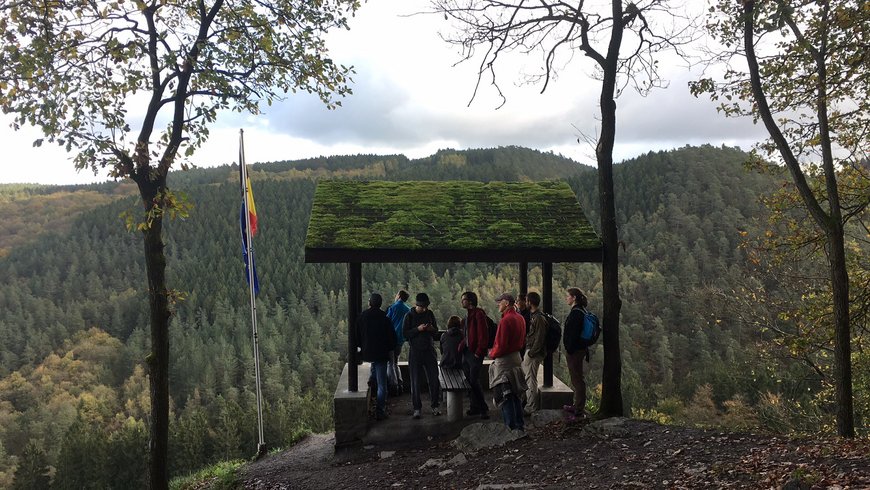
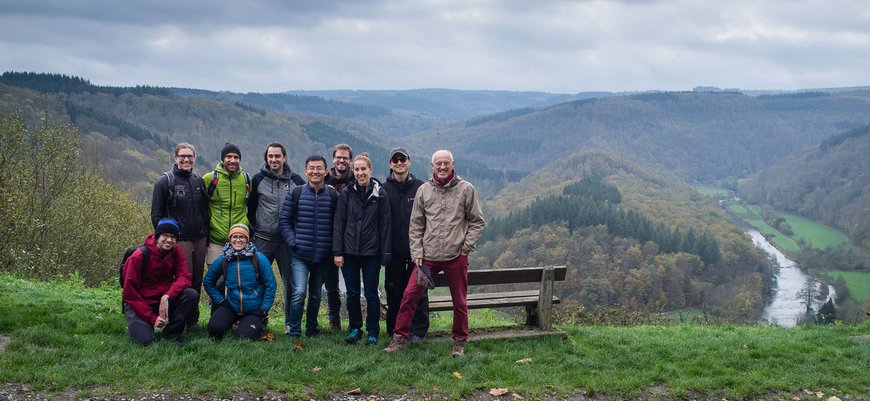

Congratulations!
Congratulations to Jessica Stanley and Audrey Margirier, who have been awarded a Humboldt Fellowship and a DAAD PRIME Fellowship respectively. Jessica´s Humboldt Fellowship, investigating the longterm uplift and erosion of southern Africa, began in September, while Audrey will complete a further year of research at the GFZ before moving to the University of Arizona to study with Professor Peter Reiners. Following her year in Arizona, where she will be researching triggers for uplift and exhumation in the Ecuadorian Andes, Audrey will return to Potsdam for a further six months´ research with Professor Manfred Strecker at the University of Potsdam.
Jessica writes, "Continental plateaus are complex manifestations of the interaction of tectonic, deep earth, and surface processes. Their formation mechanisms are not fully understood, in part because the timing and pattern of plateau uplift of is often not well known. Surface uplift is difficult to detect directly in the geologic record, but topographic uplift generally triggers an erosional response. I propose to take advantage of this relationship to constrain plateau uplift. To do this, I will constrain a landscape evolution model inversion scheme with a variety of erosion history data. This will allow me to systematically test a range of parameters to understand which uplift histories are best able to replicate the observed data, taking advantage of observations that record the erosion history on a range of spatial and temporal scales."
Audrey writes, "The growth of the Ecuadorian Andes In Ecuador has been linked to the subduction of the oceanic Carnegie Ridge. However, recent studies have suggested that a crustal sliver in western Ecuador escaping northward along the Pallatanga strike-slip zone may have influenced topographic growth in this region. The project aims at deciphering the roles of oceanic ridge subduction and/or or strike-slip motion in prompting the growth of the Ecuadorian Andes, by performing low-temperature thermochronology to assess uplift and exhumation associated with the Pallatanga Fault, followed by an inversion of landscape evolution using thermochronological data to constrain uplift rate, timing and location of the uplift and test the roles of the ridge subduction vs. topographic growth related to strike-slip faulting."
Happy Birthday Section 5.5!
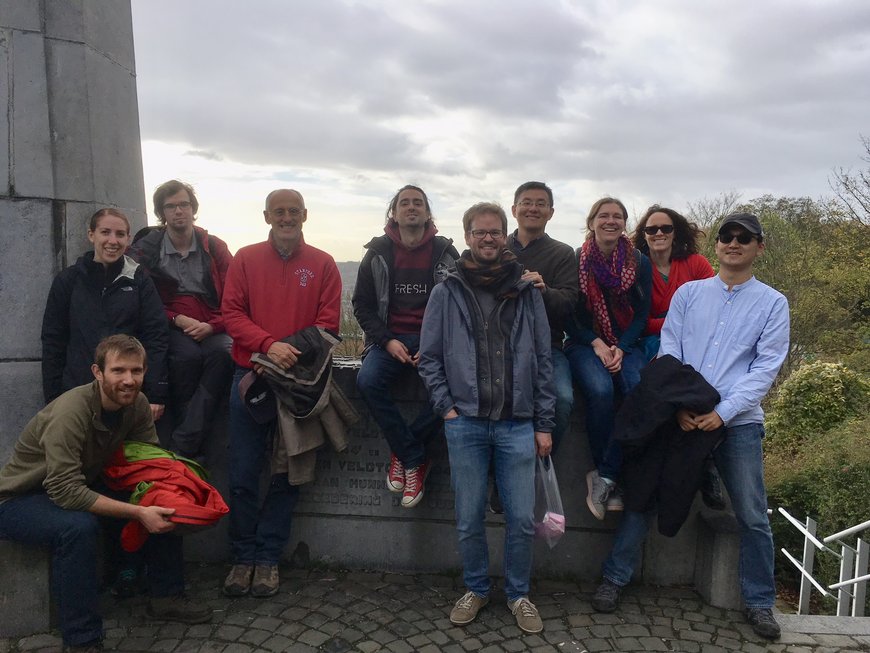
It's hard to believe, but our section is now a whole year old. In the course of just a year it's grown from a tiny team of three to a flourishing research community of 12 (soon to be 13) staff. Since June this year, we've welcomed Dr. Ruohong Jiao, Dr. Audrey Margirier, Dr. Dominik Schneider, Igor Lisac and Erik Tamre into our group while bidding farewell to Dr. Eric Deal. In November we'll be joined by Dr. Katherine Kravitz who will be working at the fascinating (and hereto little explored) interface of biology and geomorphology.
Welcome to Kim Huppert
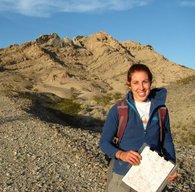
We are proud to welcome Dr. Kimberly Huppert as the newest member of our section since April 1. Dr. Huppert recently completed her PhD at Massachusetts Institute of Technology under the supervision of Professor Taylor Perron. Her thesis examined climatic and geodynamic influences on ocean island geomorphology, using topographic analyses, cosmogenic exposure dating, and landscape evolution modeling. She will be attending the EGU later this month with the rest of the section, and we look forward to her contribution to the team!
Welcome - Benoît Bovy

We are pleased to announce that as of 1 February 2017, Dr. Benoit Bovy has joined us as an engineer. Benoit completed his PhD in 2012 under the co-supervision of Professor Jean Braun, during which he has worked on the development of a numerical model of climate-dependent hillslope evolution. Drawing on his experience as a software developer and recent contributor to the Python Scientific Stack, Benoit will work on the design and development of a research software that will allow easy and efficient implementation/use of the computer models of landscape evolution developed in our team.
European Geosciences Union 2017
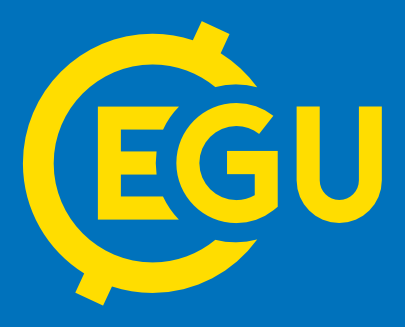
Our section will be visiting Vienna from 22-29 April to take part in the European Geosciences Union General Assembly 2017, where we will be holding presentations and giving papers on a number of different topics. Jessica Stanley, Xiaoping Yuan, Eric Deal and Jean Braun will be amongst those also taking part in collaborations with colleagues from other research institutions, including Frédéric Herman (Lausanne), Vivi Kathrine Pedersen (Bergen), Lorenzo Gemignani (Amsterdam), Becky Flowers (Colorado) and Laure Guérit (Toulouse).
Have a look here to see the full list of our section´s EGU presentations this year.
Eric Deal´s Doctoral Defence - Invitation, 2 March 2017
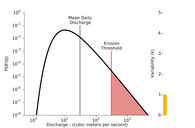
Eric Deal, who recently completed his doctoral thesis on climate variation and erosion efficiency under the co-supervision of Professor Jean Braun, will be defending the thesis here at the GFZ on 2 March 2017. The defence will take place at 2.00 pm at the Telegrafenberg, Haus H, Lecture Room 2 and all are welcome to attend.
Eric´s defence forms part of a two-day focus on the subject of climate and erosion, and will be followed by an open workshop on 3 March with international experts in this field (see below).
We look forward to welcoming you to the defence and the workshop!
Workshop - Climate Variability and Erosion Efficiency, 3 March 2017
We are looking forward to holding an exciting workshop on 3 March, when we will be welcoming renowned guest speakers from the US, France, Italy and Potsdam. Alongside Eric Deal´s doctoral defence on 2 March, the workshop forms part of a two-day focus on the topic of climate and erosion and is entitled "Ongoing Debate on the Influence of Climate Variability on Erosion Efficiency".
Guest speakers include Professor Gianluca Botter, University of Padova, Italy; Dr. Kim Huppert and Professor Taylor Perron, MIT, USA; Professor Kelin Whipple, Arizona State University; and Professor Dimitri Lague, CNRS/Rennes. From Potsdam we welcome Professor Bodo Bookhagen, Professor Jean Braun, Eric Deal and Professor Niels Hovius.
The workshop will take place at the GFZ, Telegrafenberg in Haus H, Lecture Rooms 2 and 3, from 9.30 am to approx. 5.00 pm. Entry is free, but it would be helpful if those wanting to attend could register with Emily Richards (richards@gfz-potsdam.de) to help us plan the day. We look forward to seeing you there!
New Team Member in 5.5
We are pleased to announce that as of 15 December 2016, Dr. Xiaoping Yuan will be joining us as a postdoctoral fellow funded by the COLORS project. Xiaoping will work on the development of a new model of marine sediment transport and deposit. The model will be used to better constrain the nature and timing of erosional events on adjacent continents through an inversion of the stratigraphic record.
AGU Fall Meeting

Next week, the section will be attending the American Geophysical Fall Meeting in San Francisco. Eric Deal will present his work on the effect of meteorological variability on erosion rate and a characterisation of the variability in precipitation in the Himalayas. Jessica Stanley will present the preliminary results of her research on the inversion of thermochronological and sedimentary flux data, with which it should be possible to predict the uplift history of the South African craton over the past 100 million years. Benoît Bovy, who has collaborated with Jean Braun regularly in the past, will also present the main findings of his PhD thesis, as summarised in two papers published earlier this year. These papers set out how the Quaternary climate variations and the cycles of thawing and freezing have affected the transport efficiency of soil in the Belgian Ardennes massif.
We are very much looking forward to (re-)connecting with colleagues from around the world in California!
SUBITOP Workshop, Greece
Sam Wilson-Fletcher und Jessica Stanley have just come back from Greece, where they attended a workshop and field trip organised for members of the SUBITOP European Training Network. Sam is Early Stage Researcher 15 in the ETN, and the network itself is coordinated and managed by Professor Niels Hovius and Dr Michael Dietze here at the GFZ. Find out more about SUBITOP and Sam´s work in Sam´s blog.
The trip began with an investigation of subduction system dynamics on the island of Syros, in the Cyclades, followed by a field trip to the Gulf of Corinth to explore the relationship between active extensional tectonics and geomorphology. You can find more information about the SUBITOP ETN and its training programmes here.
Visiting Speaker - Natalie Vögeli
Next week Natalie Vögeli will be visiting from Grenoble. She will give a short seminar on Thursday, 24th November at 2.00 pm in Room F 409, entitled "Climate and weathering in the Himalaya since Miocene - insight from foreland basin sediments".
Please feel free to attend.
Visit from Dr. Audrey Margirier
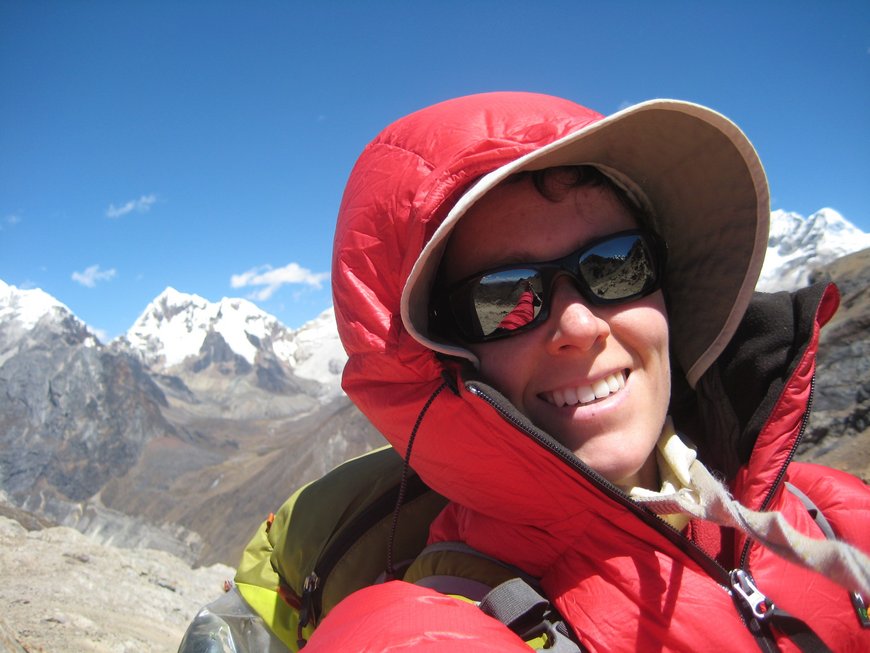
We are currently enjoying a visit from Dr. Audrey Margirier, who has spent the last four years working with Laurence Audin and Xavier Robert at ISTerre, Grenoble. Audrey will be with us for a month, working with Jean Braun on landscape evolution modelling using FastScape and focusing on the Cordillera Blanca region in northern Peru. Audrey´s PhD documented the exhumation history of this region using low-temperature thermochronology and numerical modelling.
Audrey says: "The Cordillera Blanca includes the highest Peruvian peaks and builds the footwall of the Cordillera Blanca Normal Fault. This range has been shaped by Quaternary glaciations which probably contribute to the Cordillera Blanca´s recent exhumation. However, the causes of the Cordillera Blanca uplift remain unclear. During my stay in Potsdam, I will be testing the role played by erosion and isostasy in these processes."
It is great to have Audrey working with us and we look forward to the results of her research.


